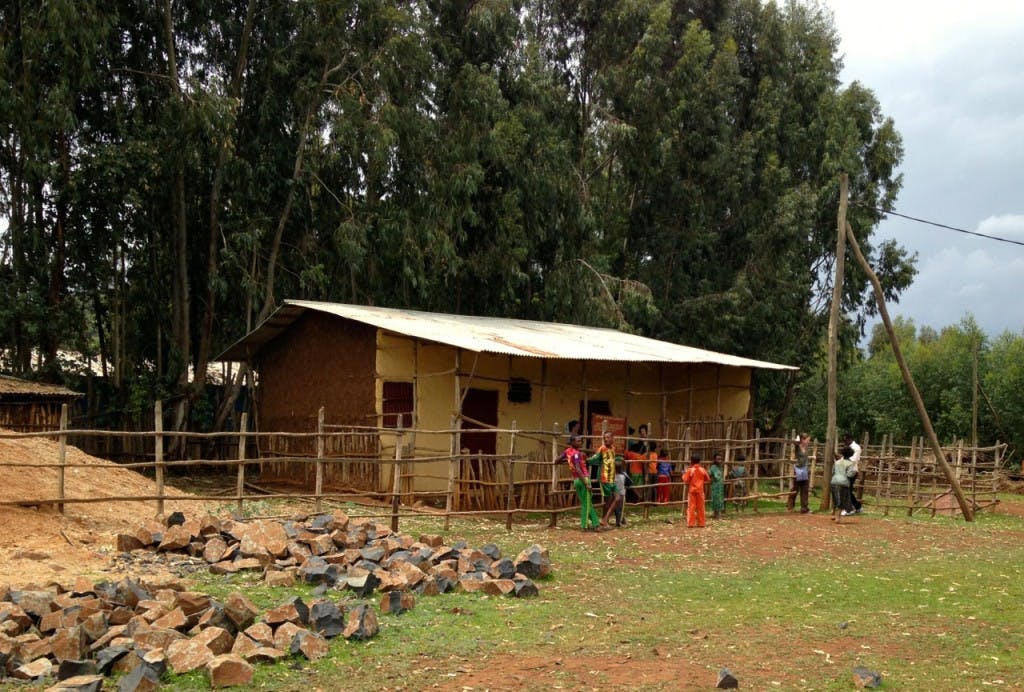A Visit to Mosebo
Jul 17, 2018
Story
Seeking
Action

Twenty-seven years ago, Tirgno Alamrew was born in the rural village of Mosebo, nestled outside Bahir Dar, Ethiopia. With the help of a translator, Tirgno tells me her mother gave birth to her in the way most mothers in Ethiopia give birth: at home, with the assistance of an untrained Traditional Birth Attendant.
I’ve learned that many mothers in this country rely solely on relatives or neighbors to help them through labor—or use no attendant at all.
It’s an issue the Ethiopian government is working hard to combat: They know that when mothers give birth at home without a skilled attendant, the risk of maternal and newborn mortality increases. Ethiopia's newborn death rate used to be one of the highest in Africa: In 1990, 101 newborns died out of every 1,000 live births. Today, that number hovers at 59 out of every 1,000 live births. That’s a 42% drop over 15 years. It means Ethiopia has managed to meet Millennium Development Goal 4, which aims to reduce under-5 mortality rates by two thirds, ahead of schedule.
When it comes to reducing maternal mortality, Ethiopia has also made strides, though they are a ways away from reaching Millennium Development Goal 5, which calls for reducing the maternal mortality ratio by three quarters. In 2000, Ethiopia’s maternal death rate was 1 in 24. As of 2014, that number has been reduced by nearly two thirds to 1 in 67. How did Ethiopia manage to achieve such drastic reductions?
Re-enter Tirgno, the woman I met in Mosebo. She’s one of 34,000 government-salaried, female Health Extension Workers who have been trained and placed across the country to assist women with accessing maternal and newborn health services. Tirgno works from a small, two room building stationed in the heart of Mosebo. When I meet her in the afternoon, it’s raining hard and the sound of water pounding on the tin roof drowns out the sound of the many children playing outside.
Inside, the walls are covered in butcher paper marked with data, and there are boxes of medical supplies lining the walls—evidence of the hard work Tirgno and her colleague do each day. I learn that as a Health Extension Worker, it’s Tirgno's job to educate women about the benefits of clean deliveries in health centers or hospitals. She also provides vaccinations and screens for the main contributors to child mortality: pneumonia, diarrhea, and malaria. A big part of her job is educating about family planning and providing contraceptives to women in her community. She's also empowered to make referrals to larger clinics and hospitals if needed.
Tirgno tells me she’s well respected in the community, which means women who meet with her are more receptive to adopting safe methods of delivery and appropriate antenatal care for their infants. After meeting with Tirgno, I walk down a hilly path to the home of one of her patients. She’s a 30-year-old mother who benefited from counseling at the health post. She gave birth to her fourth child just nine days ago. She’s beaming with pride as she shows me her healthy child, who she delivered in hospital in Bahir Dar—43 kilometers from Mosebo. She and her husband tell me that they will name him after the Amharic word for “City”, as he’s the first child in her family to be born away from home.
Tirgno and her patient are part of Ethiopia’s Health Extension Program which was launched in 2004 to bring health care directly to the doorsteps of many of Ethiopia’s most rural villagers. Currently, there are over 15,000 health posts in Ethiopia like the one I visited, each staffed with two Health Extension Workers. That’s one health post for every 5,000 people. In addition, there are 3,500 health centers across the country to which Health Extension Workers can refer patients. That, coupled with local hospitals, means access to health care is much easier for Ethiopia's women and children than it was even ten years ago.
The Health Extension Program seems to be working, but the picture isn’t all rosy. Mosebo is a relatively well-resourced village, and the women I met with live within walking distance of the health post. Essentially, it's the ideal—not the norm. It’s estimated that 80% of the population still give birth at home. Tirgno’s patient tells me she looks forward to the day when services can be expanded, so that women who must travel long distances to reach a center can also get relief. I couldn’t agree more. While Ethiopia has managed to significantly reduce newborn and maternal mortality, the numbers are still staggering. Still, the Health Extension Program is more than a step—really it’s a great bound—in the right direction. Other countries who deal with high maternal and newborn mortality rates should take notice of Ethiopia’s innovation and commitment to its women and children.
When it’s time to leave Mosebo, I watch the village children play outside in the pouring rain. They seem unfazed by the wind and mud, happy to be a part of our send off. I can’t help but think that when they have children some fifteen years from now, they’ll have greater access to maternal and newborn care than their mothers. And that’s what this is about: making life better for the next generation.
_________________________________________________________________
I’ve flown to Ethiopia as a Newborn Health Fellow with the International Reporting Project. For the next two weeks, I will be meeting with experts on maternal and newborn health issues; going on site visits to some of this country’s most successful projects; and meeting with World Pulse community members who call Ethiopia home.




